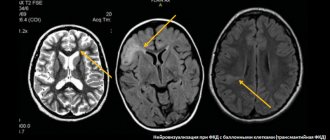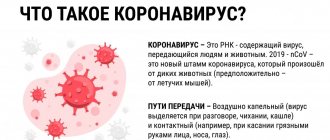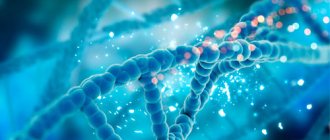Statistics show that more than half of the deaths of Russians under 54 years of age had diseases resulting from alcohol abuse. Excessive regular consumption of strong and low-alcohol drinks leads to dire consequences.
- What is alcohol intoxication
- Types of alcohol intoxication
- Stages of alcohol intoxication
- Stage 1 of intoxication: mild degree
- Stage 2 of intoxication: average degree
- Stage 3 of intoxication: severe
- How is severe intoxication determined?
- How does a person behave when intoxicated?
- Signs of alcohol intoxication
- External signs of a drunk person
- Person under the influence of alcohol
- Consciousness during alcohol intoxication
- Sclera during intoxication
- Diagnosis of alcohol intoxication
- State after alcohol intoxication
- Help with alcohol intoxication at the AlkoZdrav clinic
Types of alcohol intoxication
Drunkenness can be divided into simple and modified simple. In the second case, a person may behave inappropriately, paranoid tendencies or hallucinations may arise. It is worth noting that the degree of intoxication depends not only on the amount of alcohol, but also on the speed of its consumption. For example, 200 ml of pure alcohol drunk over 4 hours will lead to a drunken state. In 1 hour it will cause severe poisoning of the body.
Still have questions? Call us!
8
Free consultation and appointment
Cannabis group
(marijuana, hashish, anasha, “plan”, “grass”, “shag” - substances derived from hemp)
Signs of intoxication
The intoxicating effect of marijuana may vary depending on personality and situation. Intoxication in a group is characterized by contagious emotions that spread from one member of the group to all the others. There are uncontrollable bouts of laughter for a minor reason, but acute attacks of fear with an attempt to escape are also possible. If a group of people is intoxicated, then laughter or fear instantly covers everyone to the same extent. An intoxicated person is careless and frivolous in his actions. His perception of time and objects changes. Movements are poorly coordinated. The pupils are dilated, the face and eyelids are red. Speech slurring. Increased appetite - they “bomb” the refrigerator. Hallucinations may develop.
Abstinence (“withdrawal”)
Marijuana causes mild physical dependence and, therefore, mild withdrawal symptoms. It is characterized by the following symptoms: irritability, loss of appetite, weight loss, insomnia, chills and tremors (shaking) throughout the body. Duration - up to 4 - 5 days.
Consequences of long-term use
The consumer gets tired easily and is irritable. Frequent respiratory tract infections. Lung cancer may develop. In some cases, the following are observed: mood disorders (depression, anxiety), memory impairment, impaired thinking, rapid personality degradation. Hashish psychoses are possible. Decreased libido, impotence. Severe behavioral disorders with frequent antisocial behavior occur. A transition to stronger drugs is possible.
Stages of alcohol intoxication
The state of intoxication is measured in ppm. This is the number of alcohol in milliliters per 1 liter of blood. An ethanol content in the blood of up to 1.5 units is considered mild, and up to 2.5 is considered moderate. The number of ppm in the blood up to 5 is a severe degree of intoxication. More than 6 is a lethal dose.
Stage 1 of intoxication: mild degree
Mild intoxication makes itself felt by the following signs:
- All problems fade into the background, a person becomes sociable (sometimes excessively), cheerful, tightness and embarrassment disappear.
- The skin on the face turns pink due to dilation of the capillaries.
- The pulse quickens.
- A pleasant state of relaxation and tranquility.
- Slowing down the reaction rate.
It is precisely because of this state of liberation that many alcoholics begin to drink. This is especially true for people who are quiet by nature and find it difficult to meet people and communicate. Increasingly regular consumption of alcoholic beverages leads to addiction.
Stage 2 of intoxication: average degree
The nature of intoxication is quickly changing - just a minute ago the person communicated and loved everyone around him, but now he has become angry and cheeky. This means that the ppm level in the blood has increased to the average stage. You may notice incoherent speech, aggressiveness and rudeness, and loss of coordination. Even calm and kind people in this state can begin to provoke conflicts out of nowhere.
Stage 3 of intoxication: severe
An increase in the amount of alcohol, if not stopped in time, leads to the third stage. Severe alcohol intoxication can become dangerous not only for the drinker, but also for those around him. The person does not understand at all what is happening around him, he is not able to utter a word, coordination is completely impaired. Oddly enough, at this moment the level of libido increases sharply. In this state, many crimes are committed that people do not even remember when sober.
Alcohol breakdown products are eliminated from the body within approximately 24 hours. In this case, the breath is cleansed first, then the blood, and lastly the urine. For the first two stages, if we are not talking about an inadequate mental state, no medical intervention is required - a person just needs to sleep, drink plenty of water and eat a hearty meal.
What is pathological intoxication and how does it manifest itself?
Pathological intoxication is a rare transient acute mental disorder, provoked by the intake of even minute amounts of alcohol and accompanied by confusion. There are two forms: • Epileptoid with severe motor overexcitation, fear, aggression, violent anger. At the same time, a person can destroy everything around him, attack others, including loved ones. • Paranoid, accompanied by hallucinations and delusions, loss of contact with reality. Visions are threatening or frightening in nature. Aggressive or defensive behavior, scanty speech in the form of individual words or phrases of an orderly or threatening nature. The ability to perform complex targeted actions is retained, for example, using a vehicle to escape, attack or defend.
This pathological condition ends with a sudden onset of deep sleep, after which the person remembers practically nothing as a result of complete or partial amnesia.
Pathological intoxication is observed not so much as a result of alcohol intoxication, but as an idiosyncrasy to ethanol, provoked by a number of factors - insomnia, overwork, organic cerebral (brain) lesions.
How does a person behave when intoxicated?
A person under the influence of alcohol can behave in completely different ways. Some people become aggressive and picky, others may start crying and complaining. Both men and women experience increased sexual desire, which often leads to casual sex without contraception. There are also those who simply fall asleep when drunk.
Separately, it is worth dwelling on cases of mental inadequacy. If a person starts getting into a fight, running with a knife after “monsters”, “dragons”, etc., it is best to seek help from doctors. Under no circumstances should you start a showdown or scold a drunk, because he is not aware of his actions.
Content:
- The influence of alcohol
- Drug intoxication and its features 2.1. Cannabinoids 2.2. Mental stimulants 2.3. Opiates 2.4. Hallucinogens 2.5. Antidepressants - pharmaceutical drugs
States of alcoholic and drug intoxication are often similar in symptoms, but always have their own specifics.
Addicts often combine drugs with alcohol. Then the symptoms become less clear (erased) - it is difficult for doctors to understand what kind of medicine the patient took. We have to resort to laboratory diagnostic methods and tests. It is important to realize that alcohol, drug, and toxic intoxication is always a threat to health. The sooner a person receives qualified medical care, the higher his chances of recovery. If you put off seeing a doctor for a long time, serious complications will not be long in coming. Unfortunately, in advanced cases, even death cannot be ruled out.
Below we will talk about the main signs of drug and alcohol intoxication. It is possible that someday knowledge of this information will help you suspect something is wrong and take the necessary measures in a timely manner.
Signs of alcohol intoxication
Signs of intoxication include:
- Change in facial expressions;
- overly active gestures and loud voice;
- staggering, lack of coordination;
- change in behavior, for example, a calm person suddenly became nervous and angry;
- in severe cases of intoxication, fecal and urinary incontinence is possible.
If a drunk has passed out completely, the pulse has become slower and uncontrollable bowel movements or urination have occurred, it is necessary to urgently call an ambulance. Alcohol coma can lead to a detailed outcome.
"Ecstasy" - tablets
Has hallucinogenic (like LSD) and amphetamine-like effects.
Signs of intoxication
Intoxication in the first minutes is characterized by increased body temperature, dilated pupils, nausea, dizziness, and weakness. Mental effects occur within 15-20 minutes: mood rises, perception of the surrounding world is distorted - sounds can be “felt” and color shades “heard”, time flows more slowly. Increases endurance and physical strength. A person can withstand extreme loads.
Abstinence (“withdrawal”)
Mental dependence develops quickly. After the drug wears off, a state of apathy, depression, fatigue, and drowsiness is the price to pay for the artificial “acceleration” of the body. This condition lasts several days, however, it is not withdrawal.
External signs of a drunk person
From a purely outward appearance, a drunk can be seen immediately.
Person under the influence of alcohol
A drunk person reveals himself primarily by changing his facial expression. This may be either too active facial expressions, or, conversely, complete detachment. The look with small doses of alcohol becomes “brilliant”; with an increase in the amount of alcohol, the pupils of the eyes may stop reacting to light.
The skin on the face first becomes pink, and with severe intoxication it turns pale. A blue tint and swelling indicate a disruption in the functioning of the heart and kidneys.
Consciousness during alcohol intoxication
As mentioned above, the consciousness of a drunk can be either scattered or completely disconnected. The most dangerous option is when a person cannot sleep and becomes aggressive.
Sclera during intoxication
If we are talking about severe alcohol intoxication, the sclera of the eyes acquire a yellowish tint. This indicates problems with the liver. Such medical clinical signs require medical intervention.
Field score:
Total score:
Patient age
Length of use
What he uses Has he previously undergone treatment Consent to treatment Concomitant diseases Employment
Waiting for values to be entered
Why does one person quickly get drunk, while another drinks and does not get drunk?
Rapid or delayed intoxication depends on many factors; it can be objectively explained from the standpoint of the metabolic characteristics of each individual and his race, which is directly related to genetic predisposition.
Let's start with the metabolism of alcohol in the human body. After absorption, ethanol is carried through the bloodstream throughout the body and, upon reaching the liver, undergoes breakdown with the help of alcohol dehydrogenase to acetaldehyde, a substance of increased toxicity. The latter, in turn, is oxidized to acetic acid with the help of acetaldehyde dehydrogenase, and then to CO2 and water. The rate of utilization of ethanol in the body, and accordingly the speed of the intoxication process, mainly depends on the ratio of these two enzymes.
Metabolic transformations of alcohol begin almost simultaneously with its absorption. If there is insufficient production of alcohol dehydrogenase, ethyl alcohol is retained in the bloodstream, its concentration increases and the effect of intoxication occurs more quickly. It is the small amount of this enzyme in representatives of the Northern and Asian regions that explains their low tolerance to alcohol. For example, the number of people who get drunk quickly is: • among residents of South Asia – 75%. • among the population of the Middle East – 50%. • In Europe – 7-8%.
There is also an opposite reaction of the body to alcohol, when a person is surprised: “I drink and don’t get drunk, why?” To understand the mechanism of this phenomenon, the concept of tolerance to alcohol is important, which in narcology is understood as addiction to alcohol and other psychoactive substances. Alcohol tolerance often develops as a result of increased “training” of the body with regular alcohol consumption. In fact, a decrease in sensitivity to alcohol develops; an increasingly large dose of alcohol is required to achieve a state of euphoria. Some drinkers even boast about their ability to drink much more than others without getting drunk. But they don’t even suspect that this is no longer a bell, but a bell warning of the development of alcohol addiction. The “drunk” body will subsequently begin to react completely differently - tolerance will be replaced by the development of intoxication even from small doses of alcohol.
In addition, there is a theory to explain tolerance due to the characteristics of neural connections. Studies by individual scientists show that in some people the brain simply does not signal that the concentration of alcohol in the body is exceeded. In this case, the person continues to drink until the accumulation of toxins reaches a level dangerous to health and even life. Alcohol poisoning develops, bypassing the stage of intoxication.
Other factors that influence the body's resistance or sensitivity to alcohol include the following: • Gender - women usually get drunk faster than men. • Age – over the years, resistance to alcohol decreases due to age-related changes in organs and decreased activity of enzyme systems. • Weight – obese people get drunk faster because... adipose tissue actively absorbs and retains alcohol. • Health status – fatigue, exhaustion from illness and stress, sedentary lifestyle, liver and kidney diseases, endocrine disorders lead to a decrease in the body’s resistance to alcohol.
In conclusion, I want to say that the reaction to alcohol is individual, so listen to your body and never start your acquaintance with alcohol with a large-scale binge, strong alcoholic drinks and mixing them with weak alcohol. This is especially dangerous for adolescents and young adults, when the first encounter with alcohol can be fatal. Often, friends simply carry a young man who has fallen into an alcoholic coma to a quiet place to “sleep it off,” and in the morning they find him dead.
State after intoxication
After drinking alcohol, a person begins to feel symptoms of intoxication in the body:
- Nausea and vomiting.
- Hand tremors.
- Dry mouth, thirst.
- Aversion to alcohol.
- Completely inoperable.
- Chills.
- Headache.
- In severe cases, increased blood pressure and tachycardia.
As a rule, after drinking too much alcohol, it is enough to increase the amount of water, take vitamin C, eat a hearty meal, take a shower and sleep. If we are talking about severe cases (heart rhythm disturbances, vomiting does not stop, stomach pain), you may need the help of a narcologist. You also need to call a doctor if a person has been on a binge for more than 3 days - it will be almost impossible to stop on your own without cleansing the body.
Group of sedative-hypnotic drugs
These drugs are used in medicine to treat conditions accompanied by anxiety, fear, tension, insomnia, as well as epilepsy.
Signs of intoxication
Intoxication develops when consuming doses exceeding therapeutic doses. Outwardly it resembles alcohol intoxication: loss of coordination of movements, unsteady gait, slurred speech. The mood ranges from cheerful to indifferent or aggressive, and changes suddenly. An intoxicated person is disinhibited, talkative, intrusive, his attention is unstable, in conversation he jumps from one topic to another, he takes on several things at once and does not finish them. Forgets events before and during the period of intoxication. Exit from intoxication through sleep.
Abstinence (“withdrawal”)
The dependence on these drugs is very strong. Upon withdrawal, withdrawal symptoms develop on the same day and reach their peak after 2-3 days. The patient is restless and cannot find a place for himself. The mood is angry, depressive, there may be outbursts of rage. Hand tremors, weakness, dizziness, nausea, vomiting, insomnia, headache, muscle pain, and loss of appetite are noted. At the peak of withdrawal, there may be panic attacks, hallucinations, delirium, and convulsive seizures. This condition is life-threatening.
Consequences of long-term use
With chronic intoxication, movement and speech disorders develop. The skin is pale, greasy, and there is a dirty brown coating on the tongue. They sleep often and for long periods of time during the day (a criterion for dependence is that they cannot be woken up). The consumer is inhibited, his eyes are “dull”, his attention is scattered, his memory and intelligence are rapidly declining; the mood is angry and sad. They are frequent patients in psychiatric hospitals, since dependence on drugs leads to the development of psychosis, seizures, depression and suicide.
Literature:
- Causes of development and clinical manifestations of alcohol disorders and drug addiction: educational manual / Yu. N. Novichkova; National Health Institution “Scientific Clinical, Center for Postgraduate and Professional Education, Department of Additional Professional Education of Secondary and Junior Medical Personnel. — Moscow: Max Press, 2021. — 81 p.
- General and private narcology / I. N. Pyatnitskaya. - Moscow: Medicine, 2008. - 637 p.
- Identification of psychoactive substance abuse among children and adolescents / A. Yu. Egorov, A. A. Dreizin. - Kaliningrad: Publishing house Kaliningr. state University, 2005. - 155 p.
The influence of alcohol
Ethyl alcohol is absorbed in the gastrointestinal tract.
A person feels drunken euphoria because the brain, in response to drinking, increases the production of endorphins, which are often called the hormones of happiness. The higher the dose taken, the more pronounced the signs of ethanol intoxication. Difficulties with orientation in space, impaired coordination of movements, decreased basic neurological reflexes, talkativeness, unclear speech - all this confirms the use of alcohol.
Drunk people often behave inappropriately. They may cry in front of strangers, burden strangers with their problems, and change over trifles. This is due to the fact that their brain temporarily loses the ability to critically evaluate reality.
Closer to the moment of sobering up, the situation changes greatly. A drunk becomes calm, lethargic, and wants to sleep. He is no longer interested in what is happening around him. The energy disappears somewhere.








